What is Hepatoblastoma?
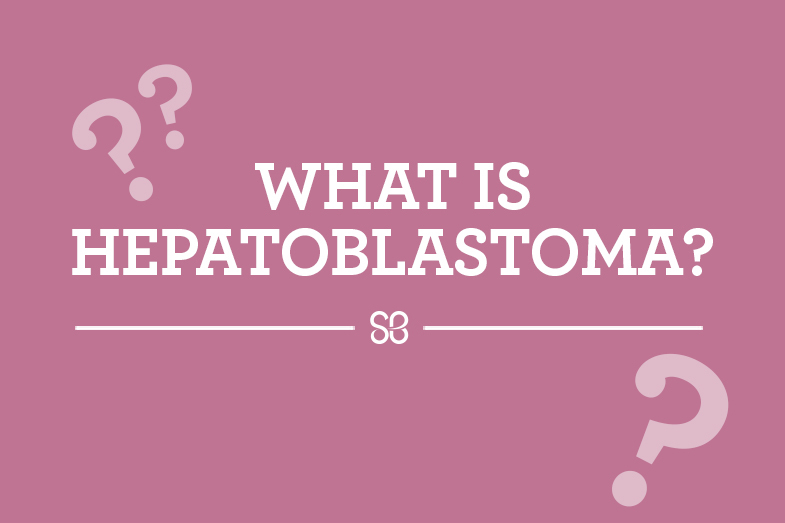 Dr. Edward Prochownik is a past St. Baldrick’s Research Grant recipient and is The Paul C. Gaffney Professor of Pediatrics and Professor of Microbiology & Molecular Genetics at Children’s Hospital of Pittsburgh. In this blog post, he answers the question “What Is Hepatoblastoma,” and shares some other information about the cancer, its treatment, prevalence, and why research is so important.
Dr. Edward Prochownik is a past St. Baldrick’s Research Grant recipient and is The Paul C. Gaffney Professor of Pediatrics and Professor of Microbiology & Molecular Genetics at Children’s Hospital of Pittsburgh. In this blog post, he answers the question “What Is Hepatoblastoma,” and shares some other information about the cancer, its treatment, prevalence, and why research is so important.Pediatric Cancer Dream Team Works Toward More Breakthroughs
Formerly known as the St. Baldrick’s – Stand Up to Cancer Pediatric Cancer Dream Team, this team is now the St. Baldrick’s EPICC Team (Empowering Pediatric Immunotherapies for Childhood Cancer).
When the St. Baldrick’s Foundation — Stand Up 2 Cancer Pediatric Cancer Dream Team was created in 2013, the idea was to pursue breakthroughs, specifically in the area of immunotherapy enabled by the application of modern genomic technologies. Now, with St. Baldrick’s as the primary funder and each member institution also investing financially — the Dream Team looks to build on the tremendous momentum in immunotherapy for childhood cancers.
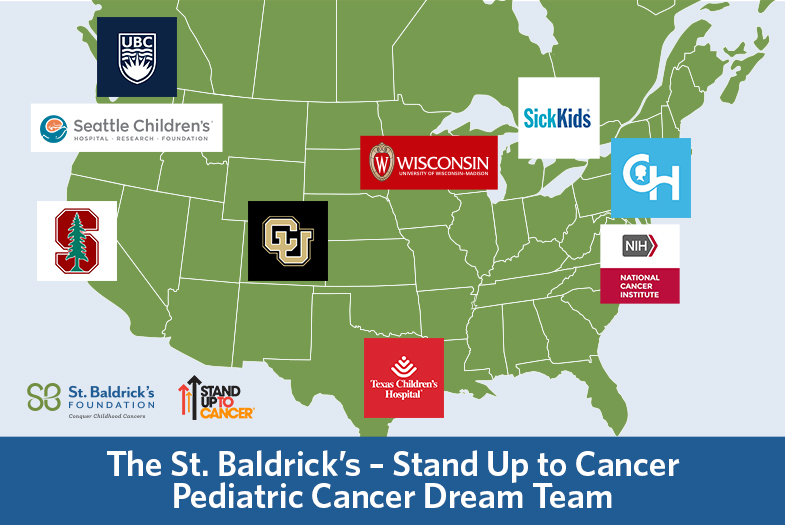
Project:EveryChild
Project:EveryChild is an ambitious initiative to find better cures for every type of childhood cancer, no matter how rare. And it is only possible because of the combined efforts of researchers, families of children with cancer, and you.

There are about 14,000 new cases of childhood cancer each year in the United States, and the most common – acute lymphoblastic leukemia – accounts for about 3,500 of those. But there are some types of cancer that are diagnosed in fewer than 100 children a year. The rarer the disease, the more challenging it is for researchers to make progress.
No matter how common or rare, each child deserves the best chance at a cure. That’s where Project:EveryChild comes in.
Why Do Kids Get Cancer?
Why do kids get cancer? That’s the question we asked Dr. John Maris, who co-leads the St. Baldrick’s Foundation – Stand Up to Cancer Pediatric Cancer Dream Team*. Researchers like Dr. Maris are working hard to find the answer to this question because it could hold the key to cures for kids’ cancer.
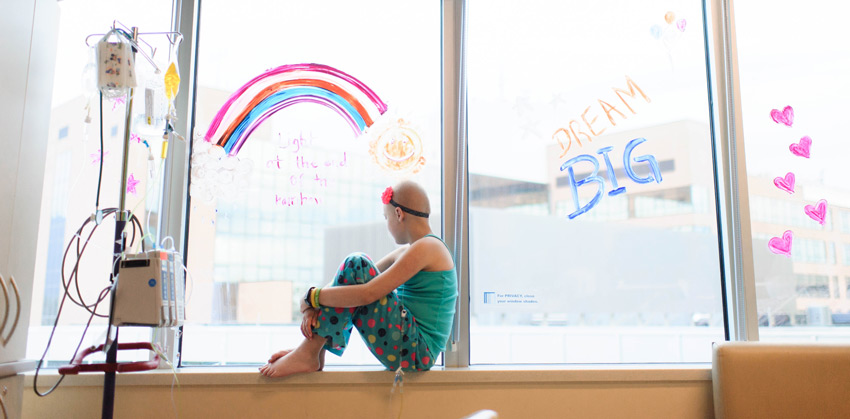
Why do kids get cancer? In short, there’s no single, easy answer.
The answer is complicated, said Dr. Maris.
What is Burkitt Lymphoma?

Raman Bahal, Ph.D., a St. Baldrick’s Research Grant recipient at the University of Connecticut, Storrs, Connecticut, explains Burkitt Lymphoma symptoms, treatment options, and research opportunities.
Childhood Cancer Facts: 10 Things You Should Know About Childhood Cancer
Every year, 300,000 families around the world will hear, “Your child has cancer.” But you can do something about it.

Aiden, Forever 7 (Angel), Diffuse intrinsic pontine glioma (DIPG), One of five 2019 Ambassadors
If you want to get involved in the fight against childhood cancer, here are 10 facts you should know.
1. Childhood cancer is the number one disease killer of children in the U.S.
Cancer is the leading disease-related cause of death for children and adolescents ages 1-19, and 1 in 264 children and adolescents will develop cancer before the age of 20.
This Childhood Cancer Awareness Month, Join Us to #DFYchildhoodCancers
September is here, or as we call it: Childhood Cancer Awareness Month (CCAM) – which, as you’d imagine, is a pretty big deal at the St. Baldrick’s Foundation, the #1 private funder of pediatric cancer research. Every year at this time there are blogs, social posts, invitations to change your Facebook profile or use a hashtag on Twitter related to CCAM – but this year you’ll also be seeing something new.
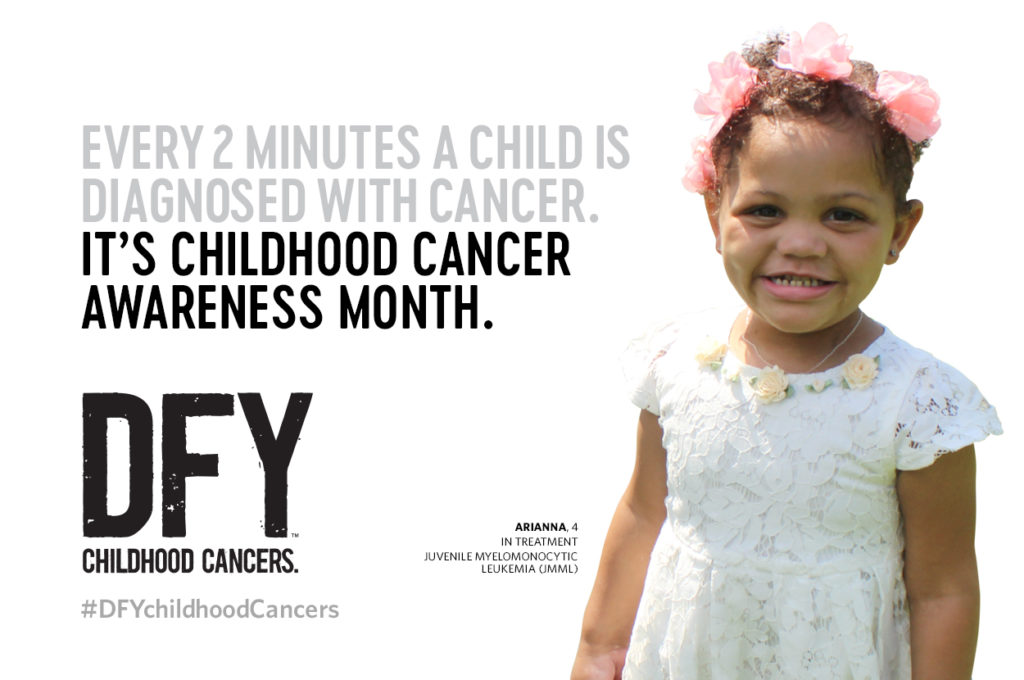
Although CCAM helps build awareness of pediatric cancers, there’s a need for a more permanent rallying cry. We don’t want September to be one month when people tweet and share Facebook updates about kids with cancer and then move on – after all, somewhere in the world, every two minutes a child is diagnosed with cancer. We purposely created this campaign to bring this reality front and center.
First, though, a little background.
What Is St. Baldrick’s?
What is the St. Baldrick’s Foundation?
Nope, it’s not a foundation started by a saint with the unfortunate nickname “Bald Rick.”
St. Baldrick’s is a charity with a funny name that does one thing and does it well.
We fund grants for childhood cancer research through head-shaving events and other fundraisers across the globe, so kids with cancer can live long, healthy lives.
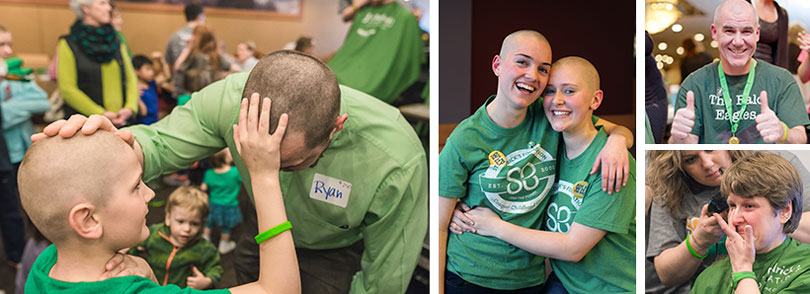
What Is Juvenile Myelomonocytic Leukemia (JMML)?

Dr. Elliot Stieglitz is a St. Baldrick’s Fellow at the University of California, San Francisco. He’s researching ways to help kids with JMML who don’t respond to standard treatment. He explains JMML symptoms, treatment options, and how your support is moving research forward.
What is JMML?
Juvenile myelomonocytic leukemia (JMML) is a type of blood cancer that affects young children.
5 Facts About Childhood Cancer Survivors
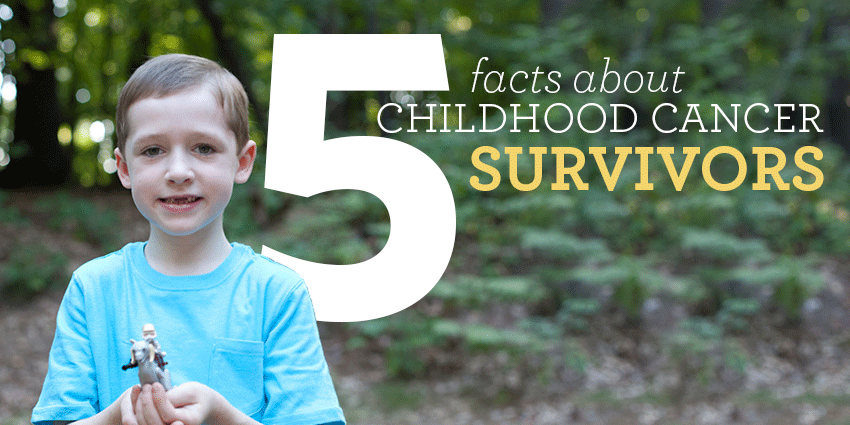
1. Each year, more children diagnosed with cancer will be cured, joining the growing population of long-term childhood cancer survivors.
Thanks to advances in chemotherapy, radiation and surgical techniques, more children and adolescents are being cured of cancer every year. Today, there are over 420,000 survivors of childhood cancer in the United States, representing approximately 1 in 750 young adults, and that number is expected to exceed 500,000 by the year 2020.
« Newer PostsOlder Posts »

 SBF
Tweets »
SBF
Tweets »